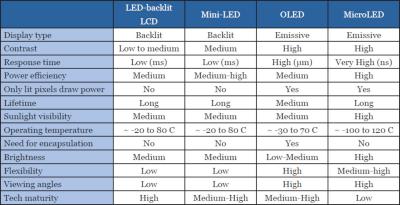DSCC sees fast growth ahead for OLED displays in the notebook market, while miniLED LCDs will stagnate
DSCC says that in 2022, MiniLEDs will hold a 49% share in the advanced notebook market, while OLED will hold a 51% share. Looking into the future,MiniLEDs sales will increase slightly, while OLED sales will rise much faster, and by 2026 OLED shipments to the notebook market will reach over 40 million panels, and hold a 75% market share.

Looking at specific vendors, DSCC sees Asus as the leading OLED notebook maker, with a market share of 55%, followed by Lenovo at 17% and both Samsung and HP at 11%. The market ranking will remain pretty constant in 2022 as a whole.










